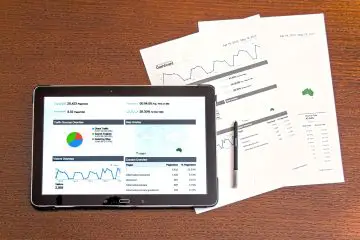Email marketing is a powerful tool in the digital marketing arsenal, allowing businesses to reach their customers directly and personally. It offers a range of benefits, including increased brand awareness, strengthened customer relationships, and improved sales conversions.
Defining Your Email Marketing Objectives
Defining your email marketing objectives is a crucial initial step in creating a successful email marketing campaign. These objectives provide a clear direction and framework for your campaign, ensuring that every action taken serves a precise purpose. Common objectives might include increasing website traffic, boosting product sales, fostering customer engagement, or improving brand awareness. It’s important to make these goals S.M.A.R.T (Specific, Measurable, Achievable, Relevant, and Time-bound) so you can effectively measure your progress and success. By clearly defining your objectives, you can tailor your email content, design, and strategy to meet these goals, leading to a more focused and effective campaign.
Understanding Your Target Audience
Understanding your target audience is a critical first step in any email marketing campaign. This involves identifying who your potential customers are, what their needs and preferences are, and how they prefer to receive communication. It’s about segmenting your audience into distinct groups based on factors like age, location, purchasing behavior, and personal interests. By gaining a clear understanding of your audience, you can tailor your email content to resonate with them, enhancing engagement and improving conversion rates. This process often involves market research and data analysis, but the insights gained can significantly boost the effectiveness of your email marketing efforts.
Choosing the Right Email Marketing Platform
Choosing the right email marketing platform is a critical step in setting up a successful email marketing campaign. The platform you choose should align with your business needs and goals. Key features to consider include ease of use, automation capabilities, integration with other systems, and analytics tools. Pricing and scalability are also important considerations, particularly for small businesses or those planning to scale up their operations. Additionally, cloud email hosting is becoming increasingly popular due to its scalability, security, and cost-effectiveness. It allows seamless access to emails from any device, anytime, which can be a significant advantage in today’s remote working environment. Therefore, when selecting an email marketing platform, consider one that offers reliable cloud email hosting.
Building Your Email List
Building your email list is a crucial component of a successful email marketing campaign. It involves collecting email addresses from potential customers who have shown interest in your brand or products. Various strategies can be employed to grow your email list, such as offering incentives like free resources, discounts, or exclusive content in exchange for their email address. However, it’s not just about quantity; quality matters too. Regularly clean your list to remove inactive or unresponsive subscribers to maintain high engagement rates and deliverability.
Designing Effective Email Templates
The design of your emails greatly influences how your audience perceives your brand. An excellent email design is not just aesthetically pleasing but also user-friendly and reflective of your brand identity. Your template should include key elements such as a compelling header, concise and engaging copy, clear call-to-action buttons, and visually appealing images or graphics. It’s also important to ensure your design is responsive, meaning it should look good and function well on any device, be it a desktop, tablet, or smartphone. This is critical given the increasing number of people checking emails on their mobile devices.
Finally, remember to keep your design consistent across all your emails to maintain brand recognition and trust among your audience.
Crafting Compelling Email Content
Crafting compelling email content is crucial to the success of your email marketing campaign. Both the subject line and the body of the email need to capture the reader’s attention and encourage them to take action. A captivating subject line can significantly increase your open rates, so it should be concise, intriguing, and relevant. The body of the email should deliver on the promise of the subject line and provide valuable information that resonates with the reader’s needs or interests. Personalization also plays a vital role in crafting engaging content; using the recipient’s name or referencing their past interactions with your brand when sending newsletters can lead to higher engagement rates. Ultimately, compelling email content is about connecting with your audience and encouraging them to engage with your brand.
Planning Your Email Marketing Strategy
Planning your email marketing strategy is a comprehensive process that involves several key steps. First, clearly define your marketing objectives – what do you hope to achieve with your emails? This could be anything from increasing brand awareness to driving sales. Next, understand your target audience – knowing who they are, their preferences and behaviors can help you create content that resonates with them. Then, decide on the type of emails you’ll send (promotional, informational, transactional) and how frequently. Consider using an email marketing platform that offers features like automation, analytics, and cloud email hosting for efficiency and scalability. Finally, plan how you’ll measure success. Setting key performance indicators (KPIs) aligned with your objectives will enable you to track progress and adjust your strategy as needed.
Testing and Optimizing Your Emails
Testing and optimizing your emails is an essential part of any successful email marketing strategy. This process involves experimenting with different elements of your emails to determine what works best for your audience. You might test subject lines, email content, design, call-to-action buttons, or sending times. A common testing method is A/B testing, where you send two versions of an email to small segments of your audience and see which performs better. The winning version is then sent to the rest of your list. Based on the results, you can optimize future emails to improve open rates, click-through rates, and conversions.
Remember, optimization is an ongoing process as audience preferences and email best practices continually evolve.
Ensuring Compliance with Email Laws
Ensuring compliance with email laws is a crucial aspect of any email marketing strategy. These laws are designed to protect the privacy and rights of individuals while also preventing spam and fraudulent practices. Some of the most well-known regulations include the CAN-SPAM Act in the U.S., GDPR in Europe, and CASL in Canada. Generally, these laws require that you have explicit consent from recipients before you send them marketing emails, provide clear and easy-to-follow opt-out mechanisms, and accurately represent your identity in your emails. Non-compliance can result in hefty fines and damage to your brand’s reputation.
Therefore, it’s essential to stay updated about these laws and ensure all your email marketing practices are compliant.

Starting an email marketing campaign involves several steps – from defining your objectives and understanding your audience, to crafting compelling content and analyzing your results. Armed with this guide, you’re now ready to embark on your own email marketing journey.








